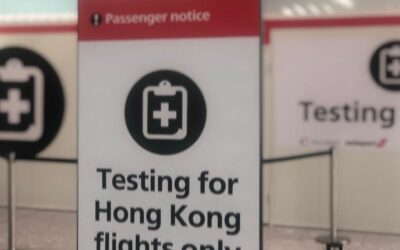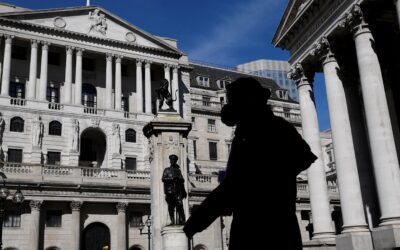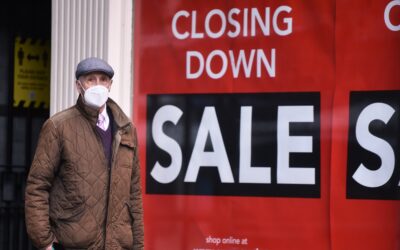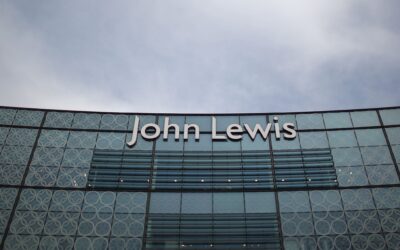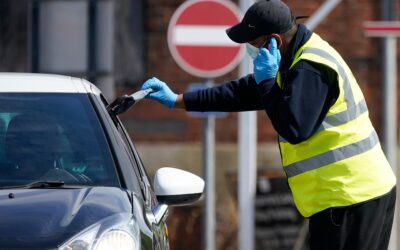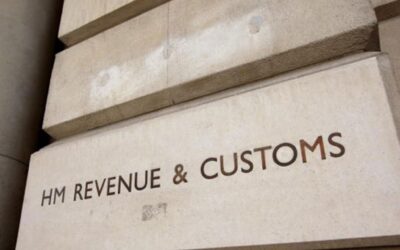Few passengers make it as far as the southern extreme of the arrival level at Heathrow Terminal 5. But anyone venturing beyond the traditional meeters’ and greeters’ base camp of Caffe Nero will see a new installation where part of the future of travel might just be taking shape.“Open wide and say ‘aaah’ for as long as you can,” instructs David, the nurse.“I’ve got five touch points at the back of the throat that I need to get, so if you continuously say ‘aaah’ it makes life easier to get to those points.”Anyone who has undergone a PCR test for coronavirus will know the feeling, but this procedure is different in two ways. First: the swabbing of the back of my throat, swiftly followed by a gentle exploration of my left nostril, is not taking place in an Ikea car park. Instead I am inside a smart white “pop-up” clinic at what is normally the busiest terminal in Europe’s busiest airport.Second: this is a different test, known as LAMP. I can confirm that the user experience is pretty much the same as a PCR test, the “gold standard” as used by the NHS. Both tests seek evidence that the virus is currently in your body, as indicated by the presence of RNA genetic material in the virus. But what happens to the deftly quarried sample is very different.Read morePCR tests are taken in batches to remote laboratories for processing, which involves some gentle cooking to stimulate reproduction of any RNA. But a LAMP test can be analysed at ambient temperature adjacent to the testing centre, with the result known in an hour or less.For the traveller and the travel industry, both of those distinctions could be crucial. An internationally agreed system for releasing aviation from the stranglehold of government restrictions and passenger uncertainty may well depend on the existence of high-efficiency test centres devoted to the needs of airlines, their staff and their passengers.Easing the process of travel will also depend on mutual acceptance by individual governments of biosecurity protocols.“I’m not sure we’ll ever get to a single agreed standard,” says Scott Sunderman, managing director of Medical and Security Assistance at Collinson — the firm that has organised the testing centre in association with the ground handler Swissport and Heathrow itself.“But what I think we’ll get to is a framework which will allow the traveller to look on their device. It will tell them exactly what’s required for the location they’re going into, what sort of test they need and what sort of timeframe they need to take the test in.”That person can then go to a lab, or come to a facility like this one here, do the test, the test results will be uploaded to their device, and then they can travel.”But where can they travel to, exactly? At present, the Heathrow facilities — in Terminal 2 as well as Terminal 5 — are available only for people heading for Hong Kong and, soon, Tokyo.The £80 test would be ideal for Cyprus-bound passengers, all of whom require proof of a negative Covid-19 result before boarding their planes to the Mediterranean island.Currently, holidaymakers have to find a private test somewhere near their home, and typically pay £150 for the privilege. But Larnaca-bound passengers cannot be checked out for Covid before they check in their bags at Heathrow.The Cypriot health ministry requires each traveller “to possess a certificate showing negative PCR examination for the virus”.Governments believe they know what works, and many have yet to be convinced that LAMP tests are as reliable.Mr Sunderman says the evidence is mounting that the two tests are equally effective. And he also recognises the irony that the nation’s sole coronavirus testing facility aimed specifically at travellers is actually working on behalf of foreign governments — to minimise harm at the destination, rather than the UK.Collinson was ready, willing and able to test passengers touching down at Heathrow as early as July. But the government has been scathing about the value of testing on arrival, known as “day zero”.Grant Shapps, the transport secretary, last week spelt out to the online convention of Abta, the travel association, why he regards arrival testing as pointless.“We know for certain that if you were to test people on day zero, that isn’t going to help,” he said.“You’d only pick up about 7 per cent of those who are asymptomatic coming off that flight on day zero.”Yet Mr Shapps also talked of a pilot programme involving the UK, US and Singapore involving tests before departure, and even suggested quarantine could be ditched for passengers who undergo a specified testing regime.
The Independent Articles
Heathrow testing: the way forward for global travel?
Few passengers make it as far as the southern extreme of the arrival level at Heathrow Terminal 5. But anyone venturing beyond the traditional meeters’ and greeters’ base camp of Caffe Nero will see a new installation where part of the future of travel might just be taking shape.“Open wide and say ‘aaah’ for as long as you can,” instructs David, the nurse.“I’ve got five touch points at the back of the throat that I need to get, so if you continuously say ‘aaah’ it makes life easier to get to those points.”Anyone who has undergone a PCR test for coronavirus will know the feeling, but this procedure is different in two ways. First: the swabbing of the back of my throat, swiftly followed by a gentle exploration of my left nostril, is not taking place in an Ikea car park. Instead I am inside a smart white “pop-up” clinic at what is normally the busiest terminal in Europe’s busiest airport.Second: this is a different test, known as LAMP. I can confirm that the user experience is pretty much the same as a PCR test, the “gold standard” as used by the NHS. Both tests seek evidence that the virus is currently in your body, as indicated by the presence of RNA genetic material in the virus. But what happens to the deftly quarried sample is very different.Read morePCR tests are taken in batches to remote laboratories for processing, which involves some gentle cooking to stimulate reproduction of any RNA. But a LAMP test can be analysed at ambient temperature adjacent to the testing centre, with the result known in an hour or less.For the traveller and the travel industry, both of those distinctions could be crucial. An internationally agreed system for releasing aviation from the stranglehold of government restrictions and passenger uncertainty may well depend on the existence of high-efficiency test centres devoted to the needs of airlines, their staff and their passengers.Easing the process of travel will also depend on mutual acceptance by individual governments of biosecurity protocols.“I’m not sure we’ll ever get to a single agreed standard,” says Scott Sunderman, managing director of Medical and Security Assistance at Collinson — the firm that has organised the testing centre in association with the ground handler Swissport and Heathrow itself.“But what I think we’ll get to is a framework which will allow the traveller to look on their device. It will tell them exactly what’s required for the location they’re going into, what sort of test they need and what sort of timeframe they need to take the test in.”That person can then go to a lab, or come to a facility like this one here, do the test, the test results will be uploaded to their device, and then they can travel.”But where can they travel to, exactly? At present, the Heathrow facilities — in Terminal 2 as well as Terminal 5 — are available only for people heading for Hong Kong and, soon, Tokyo.The £80 test would be ideal for Cyprus-bound passengers, all of whom require proof of a negative Covid-19 result before boarding their planes to the Mediterranean island.Currently, holidaymakers have to find a private test somewhere near their home, and typically pay £150 for the privilege. But Larnaca-bound passengers cannot be checked out for Covid before they check in their bags at Heathrow.The Cypriot health ministry requires each traveller “to possess a certificate showing negative PCR examination for the virus”.Governments believe they know what works, and many have yet to be convinced that LAMP tests are as reliable.Mr Sunderman says the evidence is mounting that the two tests are equally effective. And he also recognises the irony that the nation’s sole coronavirus testing facility aimed specifically at travellers is actually working on behalf of foreign governments — to minimise harm at the destination, rather than the UK.Collinson was ready, willing and able to test passengers touching down at Heathrow as early as July. But the government has been scathing about the value of testing on arrival, known as “day zero”.Grant Shapps, the transport secretary, last week spelt out to the online convention of Abta, the travel association, why he regards arrival testing as pointless.“We know for certain that if you were to test people on day zero, that isn’t going to help,” he said.“You’d only pick up about 7 per cent of those who are asymptomatic coming off that flight on day zero.”Yet Mr Shapps also talked of a pilot programme involving the UK, US and Singapore involving tests before departure, and even suggested quarantine could be ditched for passengers who undergo a specified testing regime.
Government has ‘taken foot off the pedal’ on tackling gender pay gap despite gulf increasing, Labour MP warns
The government has “taken their foot off the pedal” on tackling the gender pay gap despite the disparity in wages taken home by men and women increasing, a Labour MP has warned.Stella Creasy, who introduced a bill to parliament on Tuesday which would allow women to ask their employer for data about a male colleague if they suspect they are taking home different wages for doing equivalent work, told The Independent there was a lack of “political will” within government to address the issue.The MP for Walthamstow’s 10-minute rule bill, which has cross-party support and passed its first reading in the Commons, would also decrease the threshold for organisations which have to publish gender pay gap data from 250 employees to 100.The politician, whose bill will have its second reading on 13 November, said women have been asking for equal pay for almost 200 years yet they are still waiting for this to be achieved. She said people from a range of sectors had recently contacted her to raise issues with equal pay.She said: “People think we must have equal pay but we don’t have it. They can’t believe it given we’ve had equal pay legislation for 50 years.Read more“In my first job, the men in the organisation were paid more. It was my first job out of university and I thought I mustn’t complain. Then you think hang on, I’m doing the same work as you.“Women don’t know their male counterparts are being paid more than them. Who has that conversation? The pay gap starts before you have children. It is old-fashioned discrimination. Talent is not realised when we put up barriers about not what people can do but who they are. Why is it in 2020 people don’t get equal pay for an equal day’s work?”Ms Creasy hit out at the fact that rules obliging private companies who employ more than 250 people to release their gender pay gap figures were suspended by the government due to coronavirus turmoil.“Of all the requirements businesses have to provide, the gender pay gap is the thing which has been waived,” she said. “What message does that send about whether you think this is a priority? It’s clearly not a priority otherwise the government wouldn’t have taken their foot off the pedal.”Last year’s gender pay gap was 17.3 per cent, meaning women were paid an average of roughly 83p for every £1 men were paid, the politician said.Watch moreA report, conducted by Business in the Community in May, found half of companies did not report their gender pay gap this year, with the number of firms releasing such information having halved since 2019.The study warned coronavirus upheaval could push gender equality back a generation due to women being overrepresented in sectors most badly hit by lockdown measures, and already being more likely to work in lower-paid, more precarious forms of employment.Addressing the Commons as she put forward her bill, Ms Creasy said: “We’ve been here before. Women have been asking for equal pay since 1833. 188 years later we are still waiting. Last year alone there were 30,000 equal pay claims made at tribunal.“This year we’ve seen the gender pay gap is actually increasing – not closing. That means that nine out of 10 women in this country work in companies or organisations that pay them less on average than their male counterparts. Even in 2020.”Ms Creasy said that women ask for a pay rise just as often as men, but men are four times more likely to receive one – adding that six in 10 don’t know if they are being paid less than male counterparts.The Bank of England has forecast that ending the gender pay gap would add £600bn to our economy by 2025, she added.Read moreLast year’s reporting showed the gender pay gap has widened in favour of men at nearly half of the biggest firms and public sector bodies in the UK since the previous year – with almost eight in 10 companies still paying men more than women and more than a quarter paying female workers up to 20 per cent less.Ms Creasy’s bill was drafted by the Fawcett Society, a leading gender equality charity, who have published research today which found only three in 10 women thought their employer would tell them if their male colleagues earned more for equivalent labour if they probed them about it.While the Equal Pay Act, which was implemented in 1970, made equivalent pay for the same work a legal right half a decade ago, pay discrimination is still prevalent.“We have got a key part of the jigsaw missing,” Sam Smethers, chief executive of Fawcett Society, told The Independent. “Women can’t achieve equal pay without the Right to Know. If you have got no way of accessing male pay information, then you can’t challenge it. You can’t begin to have that conversation with your employer.”She added: “Both employers and employees would gain if we removed the need to go to a tribunal to find out what your male colleague is paid. But it would not be a free for all. You would have to suspect pay discrimination.”Sian Elliot, women’s equality policy officer at the TUC, told The Independent the leading union backed the legislation.“Coronavirus and Brexit are worsening pre-existing gender inequalities,” she said. “The government needs to take a tougher more robust approach to fixing equal pay. This bill would toughen up requirements on employers and increase transparency in the workplace.”
Bank of England ready to pump billions more into the economy as job losses rise
A Bank of England policymaker has backed the case for negative interest rates and pumping more money into the economy as coronavirus cases rise further and unemployment is set to soar.Gertjan Vlieghe, one of nine members of the bank’s monetary policy committee, signalled in a speech on Tuesday that more intervention is likely to be needed.He warned: “Given that virus prevalence has been increasing again recently, it is likely to weigh more heavily on economic activity. “Indeed, it appears that the downside risks to the economic outlook are starting to materialise.”
The UK faces a “tremendous challenge ahead” with joblessness now forecast to be far higher than previously expected, Mr Vlieghe said.
“In my view, the outlook for monetary policy is skewed towards adding further stimulus.”
Watch moreWhen rates to below zero, lenders must pay to deposit cash with the central bank, providing added incentive to lend money.
However, critics of negative rates have questioned how much of a positive impact they will have on the economy.
Mr Vlieghe joined with fellow committee members Silvana Tenreyro and Jonathan Haskel who have both pointed to evidence from European Central Bank data indicating that below-zero rates could boost lending and stimulate the economy.”My own view is that the risk that negative rates end up being counter-productive to the aims of monetary policy is low,” Mr Vlieghe said.
“Since it has not been tried in the UK, there is uncertainty about this judgment, and the monetary policy committee is not at a point yet when it can reach a conclusion on this issue.”But, given how low short-term and long-term interest rates already are, headroom for monetary policy is limited, and we must consider ways to extend that headroom.”
The Bank of England is expected to pump more money into the economy when it meets in November with a poll of analysts by Reuters forecasting that another £100bn will be created.Under the bank’s quantitative easing programme it has created £745bn of digital money, most of which has been used to purchase government bonds.But Mr Vlieghe said QE is becoming less effective at delivering economic growth.
He said: “A key channel through which QE works is by affecting expected future real interest rates, which are already very low.
“These arguments suggest QE is probably less potent now than in March, at the height of market disruption and uncertainty.”Bank of England governor Andrew Bailey has appeared less enthusiastic about the case for cutting interest rates below zero, though he has not ruled it out.Mr Bailey warned last week that “hard yards” are ahead for the UK economy.
The troubled history of resurrected airline brands
The track record for failed airlines coming back to life is discouraging.Laker Airways had arguably the the most positive passenger and public ratings of any transatlantic airline when it went bust, controversially and spectacularly, in 1982. Its rivals, accused of unfairly pursuing the disruptor, later compensated the founder.Sir Freddie Laker paid his debts and, a decade later, set up Laker Airways: same livery, same DC-10s, same basic plan: cheap flights from Gatwick to Florida. But by then the aviation landscape had changed; Richard Branson’s Virgin Atlantic had filled Sir Freddie’s considerable shoes and there was little appetite for the maverick’s Fort Lauderdale service.He had one final go at the very start of the 21st century, with a shuttle service from Fort Lauderdale to Grand Bahama, neatly connecting his homes in both south Florida and the Bahamas, but the Laker magic had gone.I swear that on the same trip where I met Sir Freddie in Grand Bahama, at Miami airport I saw a plane in the colours of Pan Am – the globe-girdling carrier that went bust in 1991. Evidently there are plenty of people who feel that just because an airline has failed, rendering thousands out of work and tens of thousands stranded, its memory can still bring rewards.Read moreYes, the well-respected regional airline that sadly went bust in March 2020, putting more than 2,000 staff out of work and cutting key links between many UK cities, is to be brought back to life “early in 2021”. Cyrus Capital, the hedge fund behind the resuscitation, won’t tell me when, exactly – presumably because it doesn’t yet know how the world will look.But the options for Flybe will look very different from the route network that existed before the (not-quite-so-) final touchdown in March. When an airline goes bust, the aviation industry is agile in assessing which routes are worth picking up.Loganair, Eastern Airways, Blue Islands and Aer Lingus Regional have between them restored the links that they believe make financial sense. There are fewer candidates than there used to be. Since the coronavirus pandemic began, travellers have demonstrated that they are happier in cars than on trains and planes.From a risk perspective, this is an irrational decision – rail and air have astonishingly good safety records, road does not. But the effect is to render links from Edinburgh and Glasgow to Manchester and East Midlands unviable. So the start-up, or re-start-up, will be chasing a dwindling number of options alongside an expanding range of competitors.“Bereft of life, Flybe rests in peace.” I wrote in March. “And that is where it should stay.”Airline kicks 75-year-old woman wearing respirator helmet off flightBut someone with considerably more cash than me evidently disagrees. Cyrus Capital has bought “the brand, intellectual property, stock and equipment” from the administrators of the failed regional airline.So if Flybe Mk 2 is the answer, what was the question?Perhaps: “Flybe was around for decades, and the brand must surely have some value?”. The odd thing is, had the airline survived it was to be rebranded as Virgin Connect.How about: “There are loads of cheap planes and out-of-work aviation professionals around; is this the chance to start a Flybe-lite, with a lower cost base?”That has a more sense to it. While the lessors of Flybe’s planes have mostly reclaimed them, the world has a surplus of aircraft right now. And hiring when nobody else is can cut cost dramatically compared with “legacy” airlines.My final offer: “Does it make sense to launch a smaller-scale carrier to link the UK with the near-continent?Possibly. The problem Flybe always had was that as soon as it built up a route to a certain scale, easyJet or Ryanair would march in with a plane more than twice as big (and a lot faster and roomier), and sweep up all the customers. Perhaps with diminished horizons and passenger numbers, that process can be reversed, with the new Flybe picking up links that the low-cost giants can no longer make pay.But I wouldn’t bet on it.
Billionaire Sir James Dyson to sell Singapore penthouse for £7m loss, just one year after buying it
Sir James Dyson has agreed to sell his Singapore penthouse for a multimillion-pound loss, just a year after buying it. The billionaire inventor has accepted an offer of $62m Singapore dollars (£35.3m) on the 21,000 sq ft apartment from Indonesian-born technology tycoon Leo Koguan, Singapore’s Business Times reported.Sir James bought the property – marketed as the largest “non-landed residence” in Singapore – last year for S$73.8m. At current exchange rates, he has lost around £7m on the apartment.The amount is small when compared to the £500m he ploughed into a now-abandoned electric car project. The zero-emissions SUV was to be built in Singapore but Dyson scrapped it last year after realising it would not be economical to manufacture.The entrepreneur and designer bought the luxury residence after announcing plans to move his business headquarters from the UK to the affluent Asian city state. Sir James, a prominent supporter of Brexit, attracted criticism over the move.Read moreHis company said it made commercial sense because although Dyson products are designed in the UK they are made, and increasingly purchased, in Asia.The property, which includes a pool, hot tub and private garden with city views, was once rated Singapore’s most expensive penthouse. It features marble floors, chandeliers and a grand piano, and covers the top three floors of the 64-storey Guoco tower.Mr Koguan, the new owner, is founder of US-based IT company SHI International and has a fortune estimated at $1.4bn.Sir James, who topped the Sunday Times Rich List for the first time this year, still has a $S26m mansion close by which backs onto Singapore’s Botanic Gardens – a Unesco World Heritage site.Dyson cancels its electric car, saying it is not ‘commercially viable’Dyson has been building its presence in Singapore as it Asian hub. Around half of the company’s sales are made in the continent.Sir James became the nation’s richest man in May this year despite losing £500m of his own money in the discontinued electric car project.
While many of Britain’s wealthiest have seen their fortunes fall due to the economic struggles caused by the coronavirus, Sir James added £3.6bn to his net worth in the past year, according to The Sunday Times.
UK shop closures reach record high amid coronavirus pandemic
A record number of shops closed during the first half of 2020 due to the coronavirus lockdown, new figures show.Some 11,120 chain store outlets shut between January and August this year, according to research from the Local Data Company and accountancy firm PwC.Around 5,000 shops opened, leaving a net decline of over 6,000 stores, almost double the drop during the same period last year.Lisa Hooker, consumer markets leader at PwC, said: “We know that the pandemic will continue to impact the way we work, rest and play; however, in terms of how we shop, this isn’t new.“What we have seen is an acceleration of existing changes in shopping behaviours alongside forced experimentation from Covid-19 restrictions.“We all knew that consumers were shifting to shopping online or changing their priorities in terms of the things they buy, but what Covid-19 has done is create a step-change in these underlying trends to where they have now become the new normal.”Read moreThe data shows there has been a steady rise in shop closures since 2017, when the total was 6,453, increasing by at least 1,000 almost every year.The types of businesses that have seen consistent growth over the last five years include value retailers and discount supermarkets.The Local Data Company predicted a rise in local tradesmen outlets, building products and locksmiths, as services such as banks and post offices move away from the high street.Lucy Stainton, of the Local Data Company, said: “As with any economic turmoil, there are opportunities for retailers who are able to weather this storm, with the availability of prime property, increased activity and spend in local centres, and changing consumer habits.“Agile retailers who are able to innovate and adapt quickly, such as Pret launching its coffee subscription service or e-bike retailer Pure Electric who have opened 13 stores this year, will be the most resilient as we head towards the end of a year which arguably has been the most challenging in recent history.”
John Lewis to become major housebuilder in £300m overhaul
John Lewis is set to become a residential landlord as part of a major overhaul that will see the department store chain cut £300m of costs and diversify beyond traditional retailing in response dire trading on the high street.The partnership plans to build rental homes at 20 of its sites across the UK, offer more financial services to customers, invest £1bn in its online operations over the next five years and expand Waitrose’s rapid delivery service through Deliveroo.It also wants to improve its environmental impact by offering products that can be rented or sold back to the company. The famous “never knowingly undersold” pledge will be replaced with a different “value for money” offering, to be decided next year.John Lewis said it was making the moves because retail profits alone will no longer be sufficient to “pay the wages we would like, or invest in our customers and communities”. It is hoped new areas of business will account for 40 per cent of profits by 2030.
Last month, the company announced plans to shut eight John Lewis stores and four Waitrose stores with the loss of over 1,400 jobs.Read moreStaff were told they would not receive a bonus for the first time since 1953 after the group fell to a £630m loss and a wrote down the value of its stores by £470m amid falling sales and a weakening outlook for retailers.On Friday, it said it plans to restore the bonus once its annual profits return to £150m. The company has set a target for profits to reach £200m in the next two years and £400m by 2025. John Lewis Partnership chairwoman Sharon White said: “We’ve seen five years of change in the past five months, and Waitrose and John Lewis have responded with great agility.
“Our plan means the John Lewis Partnership will thrive for the next century, as it has the last.
“We’re adapting successfully to how customers want to shop today, while showing the partnership is improving lives and building a more sustainable future.
“We’ll share our success with our customers, partners – who own the business – and our communities.”
‘Grim beyond belief’: Serco profits to surge as test and trace records worst ever week
Serco has announced it expects bumper profits after securing an extension to its Test and Trace contract which this week delivered its worst ever performance. As Covid-19 case numbers surged and millions of people were placed under tougher lockdown restrictions, Serco told the stock exchange that profits will come in as much as 20 per cent higher than forecast thanks to booming business during the pandemic.Labour’s Rachel Reeves labelled the announcement “grim beyond belief” and called on ministers to ditch the controversial outsourcing firm which has been involved in a string of high-profile failures.Serco, which manages test sites and contact tracing call centres for £12bn Test and Trace system, said on Friday that revenues would be £200m higher than expected this year. Watch moreIts announcement came a day after the number of contacts traced by Test and Trace fell to a new low and government scientific advisors warned the system could be overwhelmed if infection rates rise further.Just 62.6 per cent of close contacts of people who tested positive for Covid-19 in England were reached in the week ending 7 October, down from 69.5 per cent the previous week.
Local health protection teams managed to reach 97.7 per cent of contacts in the week ending 7 October.
Meanwhile, case numbers rose to 18,890 in England on Thursday, hospitalisations due to Covid-19 continued to rise and the government announced tighter restrictions which business leaders warned would threaten thousands of jobs.
“While Serco is raking in the profits, people are paying the price for its failure,” Ms Reeves said.
“If the government can’t bear to curb its obsession with pouring money into big companies over our local public health teams, it surely can see that this wasteful approach lacks basic common sense and isn’t reducing the transmission of the virus.
“It is time to sack Serco and bring in a short circuit breaker, so we can fix test and trace, protect the NHS and get control of the virus.”
Serco’s trading profit is expected to be £160m and £165m compared with a previous estimate of £135m to £150m, the company said. Full-year revenue is expected to be around £3.9bn – up from £3.7bn previously predicted.Read moreSerco has faced a barrage of criticism since it won an initial three-month contract to provide test sites and call handlers via a non-competitive tender in May. The contract was later extended, which Serco bosses said was “an indication of our customer’s satisfaction with the quality of work we have delivered”.
Serco is one of five suppliers running fixed and mobile sites where people go to get tested. It manages about a quarter of the 500 testing locations in the UK and says it has delivered 1.7 million of the 5.7 million tests delivered across all sites.The firm is one of two operators running call centres which contact people who have been identified by NHS Professionals in contact with others who have tested positive. Serco has no role in operating the NHS Covid app the booking of tests, the provision of test kits, the test laboratories, delivering test results, or the identification of contacts of people who have tested positive.Serco is also benefiting from housing more asylum seekers under a separate government contract. It won the outsourcing work despite having been fined £7m for previous failings.
The company said: “We have also seen increases in the number of asylum seekers we are looking after on behalf of the Home Office, and our new Prisoner Escorting contract has been successfully mobilised.
“We have now secured an extension to the Emergency Measures Agreement on the Caledonian Sleepers to the end of the year.”
Taxpayers lost billions to fraud thanks to ‘astonishing’ lack of pandemic planning, MPs say
Billions of pounds of taxpayers’ money may have been lost to fraud thanks to an “astonishing” lack of planning for the economic fallout from a pandemic, MPs have said.The Commons Public Accounts Committee said hastily designed loan schemes and job-support measures allowed fraudsters to take advantage of weaknesses and resulted in higher rates of error than if the government had been more prepared. HMRC has also been forced to move staff from normal tax-collecting roles to coronavirus-related work, meaning billions of pounds’ more tax than normal may have been dodged, the committee’s report said.By mid-August, HMRC estimated that it had paid out £3.5bn in fraudulent or erroneous furlough scheme claims. The National Audit Office (NAO) said last week, quoting government figures, that as much as £26bn of the money lent to small businesses under the bounce back loan scheme may never be paid back. A substantial proportion of that money is thought to have been obtained fraudulently.Watch moreCommittee chairwoman Meg Hillier said the government should have been better prepared because a pandemic has been top of the national risk register for several years.“Our finding of the astonishing lack of economic planning for a pandemic shows how the unacceptable room for fraud against taxpayers was allowed into the government’s hastily drawn up economic support schemes,” she said.“I would like to see the government publish a list of the companies which received furlough money.“Where taxpayers’ money is being used, transparency should be a given. HMRC must act now to minimise fraud and error and ensure that taxpayers do not pay time and time again in the years to come.”Ms Hillier said that HMRC needed to take action to minimise the loss to the taxpayer through fraud and error.
The committee also called on HMRC to give a more honest picture of the “tax gap” – between tax that should be paid on the UK’s economic activity and the tax actually collected. The difference is caused by deliberate evasion and accidental error.HMRC estimated the tax gap to be £31bn in 2018-19. However, the committee pointed out that this figure has a wide margin of error and said HMRC should not be quoting it without explaining its limitations. Significantly, HMRC does not include sophisticated and undesirable “tax planning” by the wealthy and large businesses in its estimates of the tax gap. Legal avoidance methods are thought to cost the public purse billions of pounds each year. On the narrower definition of the tax gap, looking at illegal tax evasion only, small businesses are thought to be responsible for more than 40 per cent of the total figure and large business 17 per cent. Wealthy taxpayers earning more than £200,000 a year, or holding assets of more than £2m, account for 6 per cent of the tax gap.

